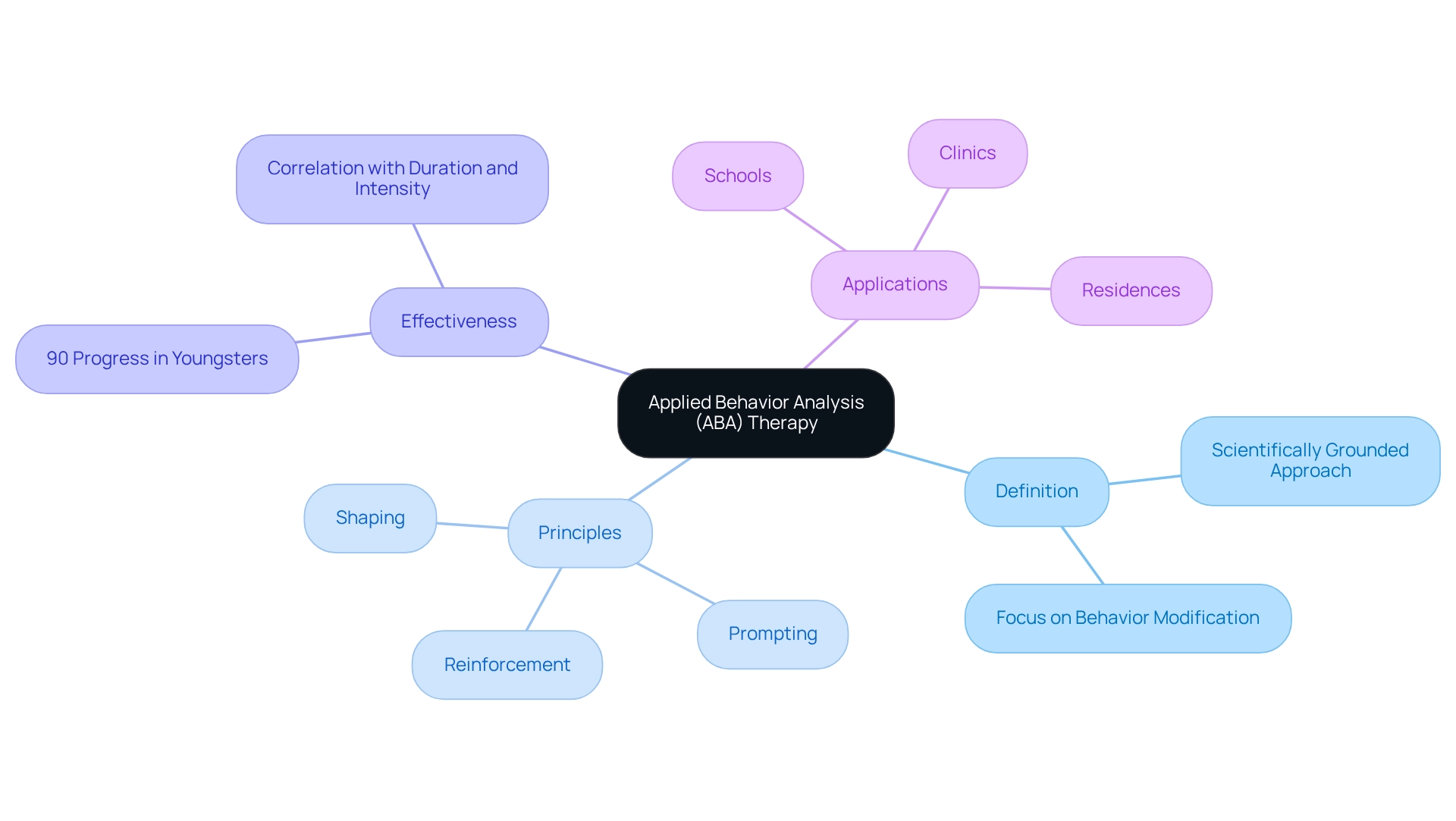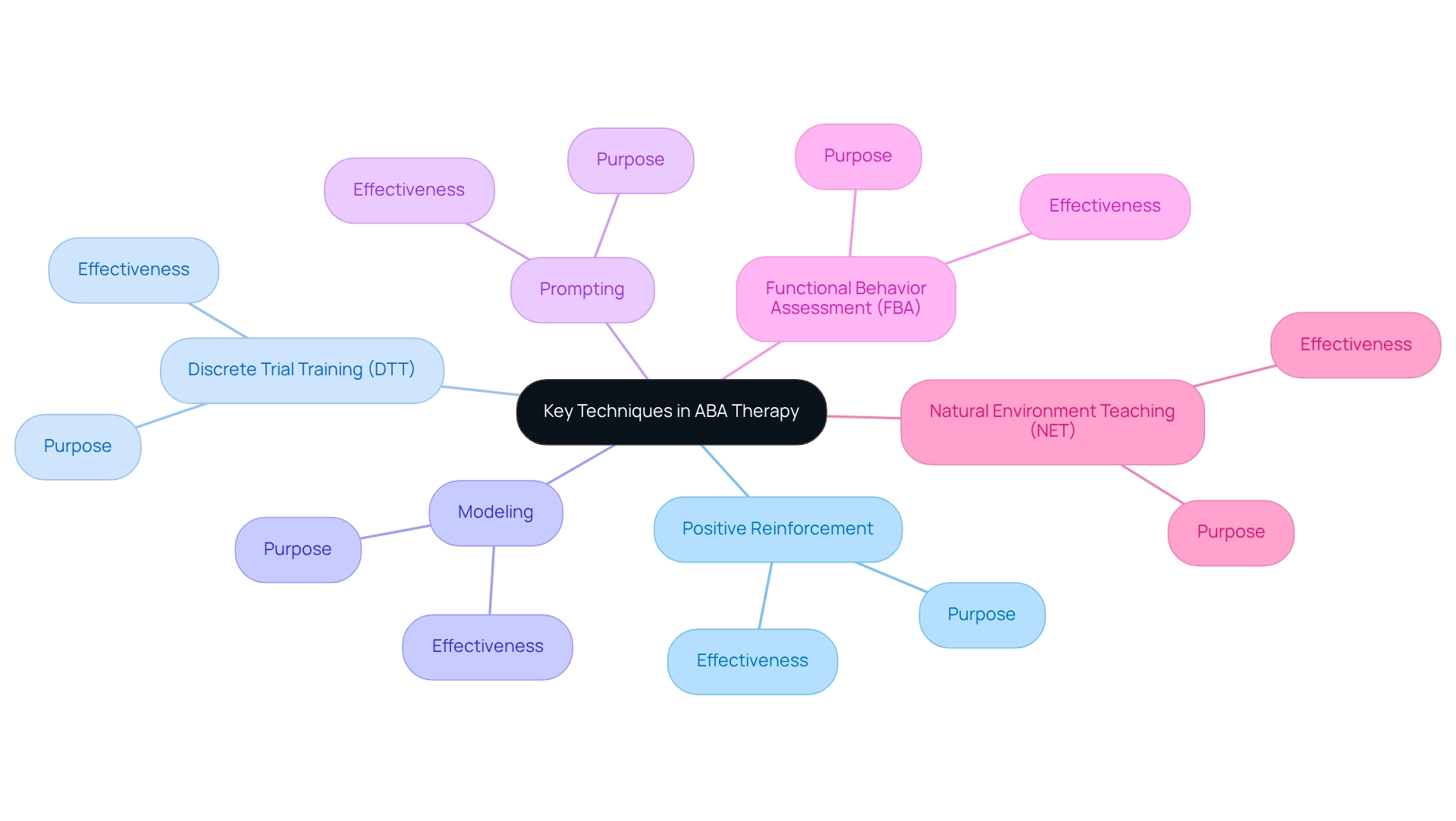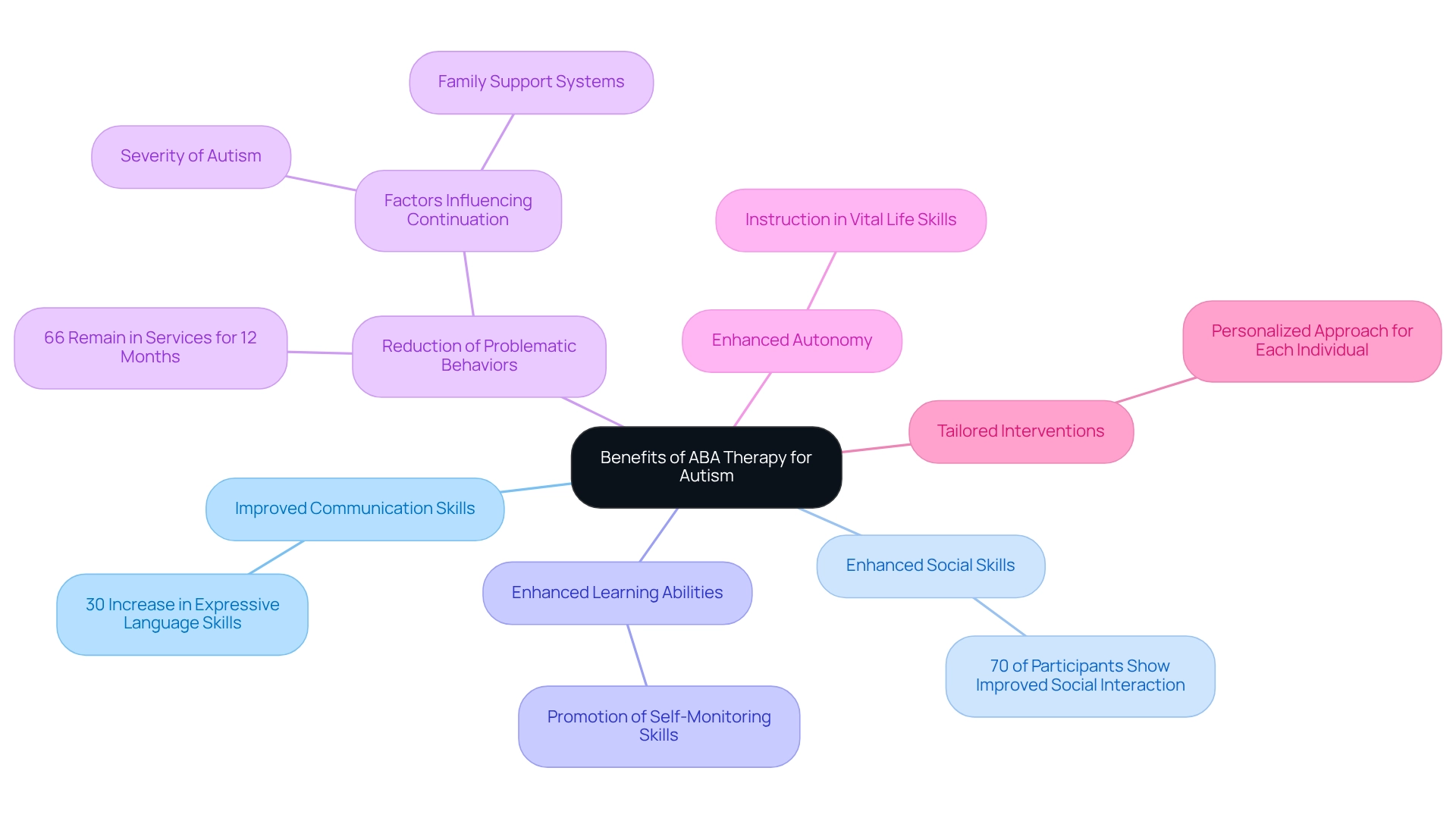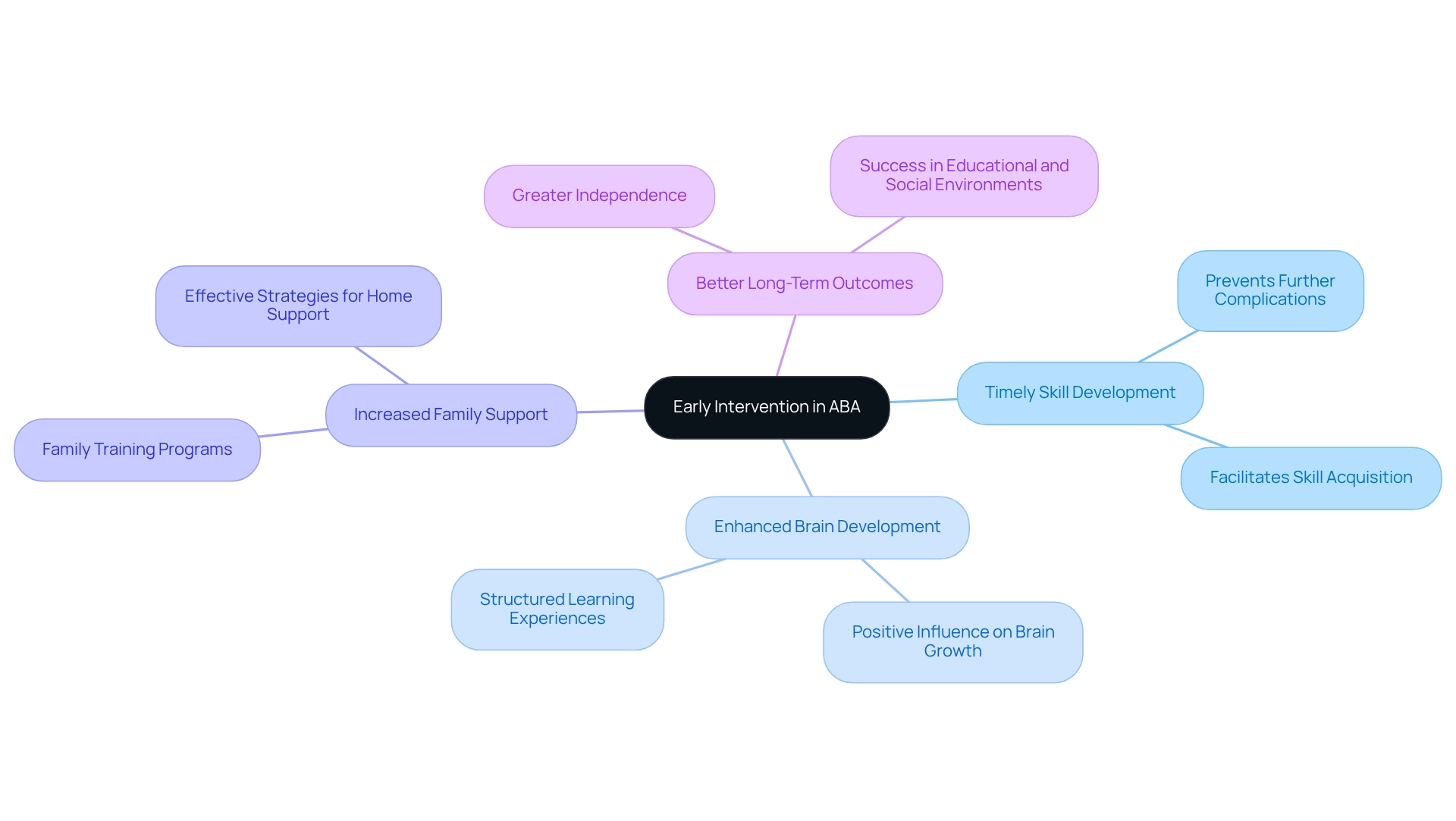May 29, 2025

Applied Behavior Analysis (ABA) therapy stands as a scientifically validated approach that effectively enhances communication, social skills, and adaptive behaviors in individuals with autism spectrum disorder (ASD) through tailored interventions.
In the landscape of autism treatment, Applied Behavior Analysis (ABA) therapy emerges as a scientifically validated approach, designed not only to understand behavior but also to modify it through structured interventions. This method proves particularly impactful for individuals with autism spectrum disorder (ASD), as it emphasizes the enhancement of positive behaviors while diminishing those that are harmful or disruptive.
Grounded in behaviorism, ABA therapy employs data-driven techniques to tailor interventions that resonate with the unique needs of each individual. As research continues to unveil the profound benefits of early intervention and customized strategies, the role of ABA therapy in fostering communication, social skills, and independence becomes increasingly vital.
This article delves into the core principles, techniques, and benefits of ABA therapy, illuminating its significance in transforming the lives of those on the autism spectrum.
Applied Behavior Analysis (ABA) treatment stands as a scientifically grounded approach, focusing on understanding and modifying behavior through systematic interventions. With roots in behaviorism, ABA asserts that behaviors are influenced by environmental factors and their consequences. This treatment proves particularly effective for individuals with autism spectrum disorder (ASD) by using ABA for autism to enhance desirable behaviors while reducing harmful or disruptive ones. Notably, Dr. Ivar Lovaas, the creator of ABA treatment, observed that approximately 90% of youngsters achieve significant progress through ABA intervention, underscoring its efficacy.
Practitioners employ data-driven methods to assess behaviors, develop tailored interventions, and monitor progress, thereby ensuring effective outcomes. A recent study titled " revealed that both the duration and intensity of ABA services positively correlate with improvements in adaptive behavior scores, emphasizing the importance of sustained intervention. Furthermore, recent statistics indicate that a significant number of youth with autism undergo ABA for autism treatment, showcasing its extensive adoption and application across various environments, including schools, clinics, and residences.
Key principles of ABA encompass:
These principles are essential for fostering positive behavioral changes. Real-world examples of ABA for autism interventions illustrate its versatility and effectiveness, demonstrating how individualized strategies can lead to meaningful improvements in the lives of children. As the field progresses, continuous research and advancements in ABA techniques remain vital for enhancing treatment results and assisting those with ASD. Additionally, various factors influence the effectiveness of ABA treatment, highlighting the necessity for ongoing investigation in this domain.

Key techniques in ABA for autism are essential for effectively assisting individuals with autism. The demand for (BCBAs) is increasing, highlighting the necessity of these methods. These techniques include:
These techniques are customized to meet the unique needs of each individual, ensuring that interventions are both effective and meaningful. The growing need for ABA professionals highlights the importance of these techniques in tackling behavior-related issues, making ABA for autism a crucial resource for assistance and treatment. As Steven Zauderer, CEO & Founder, notes, "Breaking down ABA Therapy Success Stories & Great Results Of Applied Behavior Analysis" highlights the effectiveness of these techniques. Moreover, the expanding domain of ABA practices provides adaptable career options, indicating the rising investment in these vital services.

The benefits of ABA for autism therapy for individuals with autism are profound and multifaceted.
Improved Communication Skills: ABA therapy significantly enhances both verbal and non-verbal communication abilities, allowing individuals to better express their needs and engage with others effectively. Recent studies suggest that youngsters undergoing ABA treatment exhibit significant enhancements in communication abilities, with many showing a 30% rise in expressive language skills. This statistic is derived from a study sample of 334 youngsters referred for ABA in 2016 or later, highlighting the treatment's effectiveness.
Enhanced Social Skills: Focused strategies within ABA programs instruct participants on how to manage social interactions, identify social cues, and cultivate meaningful relationships. Case studies reveal that 70% of participants who engaged in ABA therapy exhibited improved social interaction, showcasing the therapy's effectiveness in real-world scenarios.
Enhanced Learning Abilities: ABA techniques are designed to promote effective learning strategies, enabling individuals to acquire new skills more efficiently. Effective ABA techniques foster self-monitoring abilities in young individuals, which further enhances their learning capabilities. This structured approach not only aids in skill acquisition but also enhances overall cognitive development.
Reduction of Problematic Behaviors: By identifying triggers and implementing tailored strategies, ABA techniques effectively address challenging behaviors. Research indicates that 66% of children referred for ABA support stay in services for a minimum of 12 months, reflecting a dedication to continuous behavioral enhancement. Elements like the severity of autism and family support systems greatly impact the persistence of treatment, highlighting the necessity for continuous evaluation and cooperation.
Enhanced Autonomy: ABA treatment enables people by instructing vital life skills, promoting enhanced autonomy in everyday activities. This empowerment is crucial for enhancing self-sufficiency and overall quality of life.
Tailored Interventions: Each ABA program is carefully adapted to address the distinct requirements of the person, ensuring that treatment remains pertinent and effective. This personalized approach is vital for achieving meaningful outcomes, and overall, the effectiveness of ABA for autism is widely acknowledged for its ability to create significant and enduring behavioral changes, greatly improving the lives of individuals with autism. As , PhD, MS, noted, this research builds on prior studies of ABA after implementation of California’s autism mandate, addressing limitations in sample size and generalizability issues. As the demand for effective autism assistance continues to grow, the role of ABA intervention remains crucial in fostering communication and social skills development.

Prompt assistance in ABA for autism treatment is essential for achieving optimal results for youngsters with autism. Research consistently demonstrates that initiating ABA intervention at a young age leads to significant improvements in communication, social skills, and adaptive behaviors. The earlier a young person begins treatment, the more likely they are to acquire vital abilities that will benefit them throughout their lives. Key benefits of early intervention include:
The wealth of evidence supporting ABA for autism underscores its crucial role in improving the lives of youth with autism. For instance, a case study examining the effects of ABA therapy on youth with intellectual disabilities revealed that participants developed essential life skills and enhanced confidence, enabling them to engage more actively in their communities. Furthermore, ongoing research continues to highlight the advantages of early intervention, reinforcing the idea that timely access to ABA for autism services is vital for maximizing developmental potential. As the field of autism treatment evolves, continuous research and emerging methodologies will further clarify ABA's potential to address the complex needs of youth with ASD. Parents and caregivers are urged to seek these services promptly after a diagnosis to ensure their children receive the necessary support for a brighter future.

The exploration of Applied Behavior Analysis (ABA) therapy reveals its critical role in supporting individuals with autism spectrum disorder (ASD). By understanding and modifying behavior through structured, data-driven interventions, ABA therapy has established itself as a scientifically validated approach that fosters significant improvements in communication, social skills, and independence. The techniques employed—such as positive reinforcement, discrete trial training, and functional behavior assessments—are tailored to the unique needs of each individual, ensuring that interventions are both effective and meaningful.
Moreover, the benefits of early intervention in ABA therapy cannot be overstated. Research consistently demonstrates that initiating therapy at a young age leads to optimal outcomes, as children develop essential skills and gain confidence in their abilities. This early support not only enhances brain development but also empowers families with strategies to reinforce learning at home, thus creating a nurturing environment for growth.
As the demand for effective autism support continues to rise, the significance of ABA therapy remains paramount. It has proven to be a transformative resource, significantly enhancing the lives of individuals with autism and their families. By promoting communication, social engagement, and independence, ABA therapy helps pave the way for a brighter future, emphasizing the need for timely access to these vital services. The ongoing evolution of ABA therapy, supported by research and innovation, holds great promise for addressing the complex needs of the autism community, reinforcing the message that early and tailored interventions can lead to lasting positive change.
What is Applied Behavior Analysis (ABA) treatment?
ABA treatment is a scientifically grounded approach focused on understanding and modifying behavior through systematic interventions, particularly effective for individuals with autism spectrum disorder (ASD).
Who created ABA treatment and what is its effectiveness?
Dr. Ivar Lovaas created ABA treatment, and it has been observed that approximately 90% of youngsters achieve significant progress through ABA intervention.
How do practitioners implement ABA treatment?
Practitioners use data-driven methods to assess behaviors, develop tailored interventions, and monitor progress to ensure effective outcomes.
What recent findings support the effectiveness of ABA treatment?
A study titled 'Longitudinal Changes in Adaptive Behavior Scores' found that both the duration and intensity of ABA services positively correlate with improvements in adaptive behavior scores.
Where is ABA treatment commonly applied?
ABA treatment is extensively adopted and applied in various environments, including schools, clinics, and residences.
What are the key principles of ABA?
The key principles of ABA include reinforcement, prompting, and shaping, which are essential for fostering positive behavioral changes.
Can you provide examples of ABA interventions for autism?
Real-world examples of ABA interventions illustrate its versatility and effectiveness, showing how individualized strategies can lead to meaningful improvements in the lives of children with autism.
Why is ongoing research important in the field of ABA?
Continuous research and advancements in ABA techniques are vital for enhancing treatment results and assisting those with ASD, as various factors influence the effectiveness of ABA treatment.
Our expert recruitment strategies and AI-driven sourcing ensure that you receive top-notch candidates quickly, without compromising on quality. Whether you’re looking for BCBAs, Clinical Directors, or RBTs, we’ve got you covered.